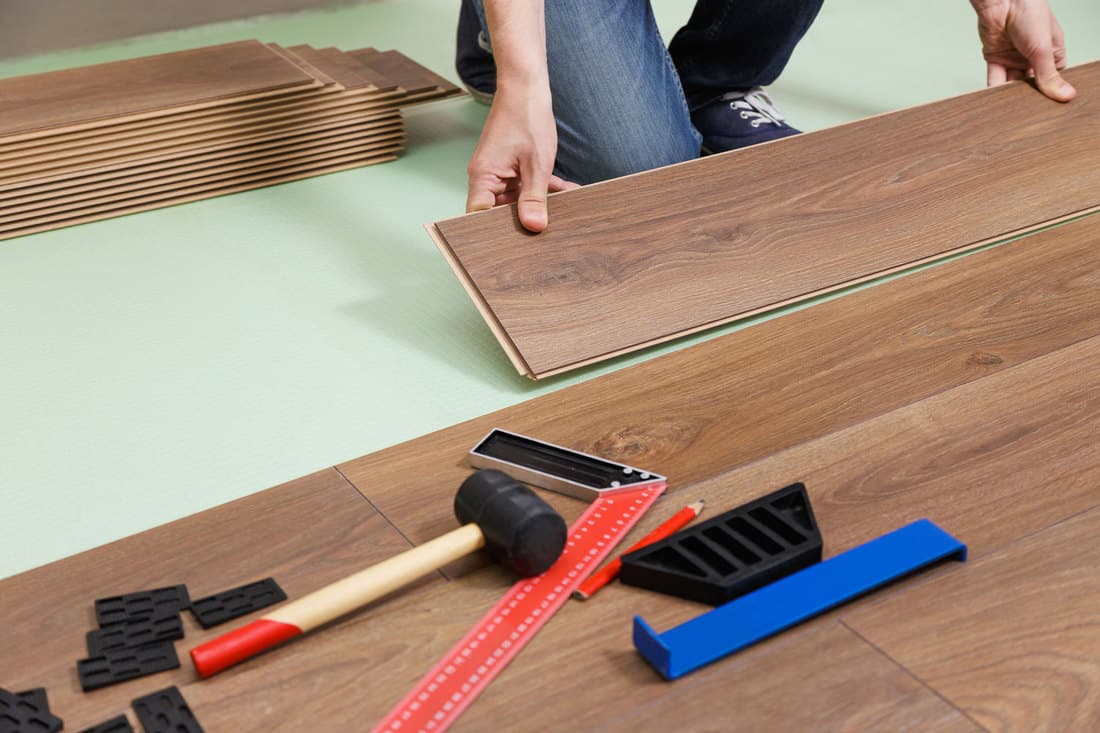Hardwood floor planks always look cozy, luxurious, and gorgeous. But they can also have a big price tag, so it’s important to get your hardwood planks just right the first time around. If you’re installing an entirely new floor or replacing the old one, you might be wondering how wide your hardwood planks should be. It can actually transform the look of the whole room. So, we’ve thoroughly researched just how wide your hardwood floor planks should be.
The standard width of hardwood planks will range between two and four inches. However, these are considered to be narrow planks. There are also wider options, but only for certain types of wood. These special wide planks can begin with widths around five inches. You might also find widths measuring between 10 and 14 inches.
The width of your typical hardwood planks is important for the style of your room. It can even determine the species of wood you’ll have to work with. Keep reading to learn how the true plank width is determined and if wider hardwood is more expensive or trendy.

How Wide Should Hardwood Floor Planks Be?
There are two primary kinds of wooden plank widths. You can choose between the commonly used narrow planks or wide planks. They each have their own benefits and drawbacks, but they also have their own place in certain circumstances.
Narrow Floor Planks
Traditional hardwood floor planks are considered narrow, measuring about two and one-quarter inches wide. Most of the time, they won’t measure past three inches wide. They are generally cut at these widths for style.
The lines are tidier than wide planks because the faces are generally smoother. In other words, you are less likely to see traces of nature in the wood.
Unless you’re using something like knotty pine, in particular, narrow wood planks are less likely to proudly highlight the knots, streaks, and grain of the wood. This is what allows narrow planks to agree with just about any interior design.
This can also be helpful for interior design styles that want the floor to appear less busy. For example, traditional style interior designs shouldn’t feel too messy. It’s important to maintain a nice balance but also to reflect a vintage look. Narrow floor planks reinforce the comfort of those classic designs.
Wide Floor Planks
Meanwhile, wider hardwood planks measure between five and 14 inches. This is going to allow the wood to lean into its natural features. This can add a lot of personality to your flooring because every tree will have its own patterns, knots, and streaks.
And although there will be more of these wooden traits, the floor will also have fewer hard lines. This can fit with interior designs like a cabin, cottage, or country scene. These cozy and rustic styles welcome a handmade, small feel throughout the home.
In fact, these designs even welcome exposed ceiling beams at times. You can read "23 Rustic Farmhouse Living Room Ideas."
Does Floorboard Width Include The Tongue?

To begin with, you should know what the tongue of a wood plank is. Floating floors are generally not solid hardwood. Instead, they are often made of something like vinyl or laminate, which is often considered imitation hardwood. That’s because laminate floors are only engineered wood, with an image layer on the surface that mimics real wood.
These floating types of floors are actually connected by an interlocking system of tongues and grooves. These tongues and grooves just click together, which makes them very easy to install. Floating floors are not secured directly to the floor, so they are named quite literally.
In other words, this width doesn’t really apply to hardwood floors. That’s because real, solid wood is not suitable for the floating design. It will be too unstable and vulnerable.
Most of the time, the width of the tongue in the interlocking system is not actually included when the width of the plank itself is measured. You should definitely keep this in mind when you purchase new floating floor planks because, unlike real wood, you can often replace floating planks individually. This is one of the larger reasons that floating floors are so popular.
Is Wider Hardwood More Expensive?
Wider hardwood planks will mainly be more expensive than narrow alternatives. That’s because wider planks are often designed to be longer, as well. Otherwise, the planks would appear disproportionate.
In other words, you’ll always be paying for more wood than if you purchased narrow alternatives. Even if you bought the same amount of square footage, the wide planks would still cost more per piece.
In addition to the added length, wide planks are also primarily made of real wood. This is always going to be more costly to sell and purchase. That’s because it’s much rarer to find natural wood species that can provide larger widths. Like any product, when the supply is too low, it will result in higher prices.
Are Wide Plank Floors Trendy?
The trends of any interior design are always subject to change, basically from one year to the next. However, wide planks have become increasingly popular lately. That’s because bolder choices are a common trend these days, welcoming more personality than tradition. As more people have enough time to restyle their homes, it's easy to incorporate the rooms with more DIY projects and personal preferences.
Fortunately, wide wood planks always have plenty of unique characteristics, particularly when they’re made of real wood. It’s hard to imitate the amount of personality in natural knots and streaks from actual lumber.
But wider planks also open up the floor plan. Since there are fewer edges on the flooring, the room will naturally feel more spacious. This is very practical, and the trends that stick around tend to serve a useful function too.
How Thick Should Hardwood Floor Planks Be?
Most of the time, hardwood floors are already dense enough to remain stable even when they’re thin. But you still want a thicker hardwood plank because you need to consider the finish.
Hardwood floors may seem tough, but they require a lot of protection. The surface layer is definitely going to need a finish in order to prevent water damage. It can also minimize scrapes or dings.
But water is absolutely the mortal enemy of any wood flooring. Moisture is a breeding ground for fungi like mold and mildew. It may also warp the shape of the wood, causing uneven lumps across the surface. You can read Why Does My New Hardwood Floor Squeak [With Tips On What To Do About It!].
So, it’s usually best to ensure that your hardwood planks measure around three-quarters of an inch wide. This makes it possible to safely apply the initial finish and refinish the wood later on. In order to keep the wood protected for a decent amount of time, you’ll have to refinish it now and then. Natural wood, in particular, is vulnerable to damage.
We may include affiliate links and curated AI content to highlight top design styles.
Click here to find this wood finish on Amazon.
But if your wood is too thin, then any refinishing process is actually likely to strip away the wood, too. That’s because it is essential to remove the old finish before applying a new one. So, try to avoid any natural wood that measures around a quarter of an inch thick.
Summary

Hardwood floors are versatile enough to fit in a wide range of interior design styles. But they can be difficult to choose due to their variety and cost. Now that you know how much the width of the wood planks can affect these factors, you’ll be able to make an informed decision when you select your new floor. All that’s left is installing the gorgeous new wood that will serve your personality and style.



